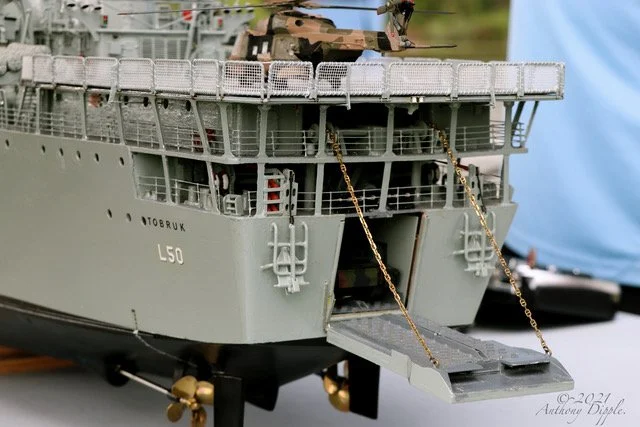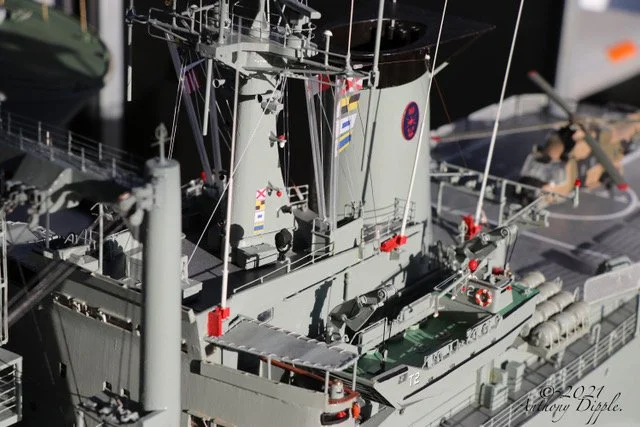Scaled down model HMAS Tobruk rides the waves again



Ex-sailor Rick Mayes’ tells us about his intricately detailed HMAS Tobruk (II) radio-controlled model of the famed Royal Australian Navy ship.
HMAS Tobruk was commissioned on 23rd April 1981, decommissioned on 31st July 2015, and scuttled as a dive wreck in Hervey Bay in 2018. I served on her for 22 months in the rank of Petty Officer Radio Supervisor, before retiring from the Navy in September 1984.
HMAS Balikpapan was commissioned on 27th Sept. 1974, decommissioned on 12th December 2012, and sold to the Philippine Navy.
My association with HMAS Tobruk L50 (landing ship heavy) began on July 19 1982, when I was posted to the ship as my last posting during my 20 years’ service in the Royal Australian Navy.
The posting was a very demanding, enjoyable and rewarding one, to the extent I obtained modellers plans, and thought one day to build a fully working model later on in life, which has now come to fruition. Many photos and details were also accumulated in order to build a very detailed model.
The model is built to a scale of 1:72 which gives a length of 1.7 meters and weighs 18 kgs. Operation is by two 10 channel transmitters, one for “at sea” operations using 9 channels and the other for “in harbour” operations using 7 channels.
The model has five working flag hoists, bow doors and stern ramp opening to off load two Abrams tanks and mobile crane, operating helicopter safety rails, red flashing lights on the helicopter and rotating helicopter blades.
There is also a ships’ horn, smoke maker, working port anchor, bow thruster, rotating radars and ships’ radio equipment (SRE), to broadcast throughout the ship. On the vehicle deck there are a variety of trucks, jeeps, trailers, a LARC V, a LCM8 and four shipping containers.
Also, to work with Tobruk, I have built a working model of HMAS Balikpapan L126 (landing craft heavy).
This model is at the same scale as Tobruk, with a length of 70 cm, and has working functions including bow ramp, two flag hoists and rotating radar.
While “at sea”, she can “marry up” (join) her bow ramp with Tobruk’s stern ramp, and transfer an Abrams tank.
So that the tank is not lost into the water, clips are operated through Tobruk’s ramp, to join both ramps together.
I have also built a floating wharf, to berth the models and to off load the two Abrams tanks and one mobile crane. In order for the models not to move within their respective docks, Tobruk has a “berthing rod” which protrudes out from the starboard side of the model to connect to the wharf.
Balikpapan has the same operation, with the “berthing rod” operating from the wharf. The picture shows the Tobruk and Balikpapan berthed in their respective “finger docks” and a further model, the MS Whakatane, built by my late mate Terry Godsell who served in her as Electrical Engineer, berthed outboard of the wharf.
Over the years, I have built a further three warships, which I had served in during my 20 years’ service, however, my love of modelling ships, lies with sailing schooners and square riggers. I am a member of the Sunshine Coast Model Boat Club Inc., and we meet at the University of the Sunshine Coast at Sippy Downs, every Sunday between 8am-1pm.
